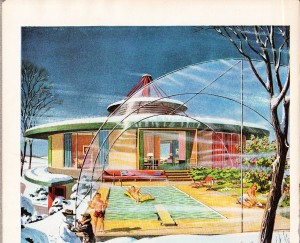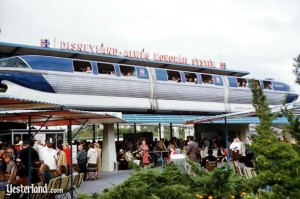Technology
Great News For The Environmentally Unconscious
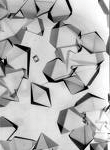
Posted By: Nethie - Tue Jun 16, 2009 -
Comments (5)
Category: Inventions, Science, Technology, Natural Resources
On or Off caffeine?
As promised, here's another step forward thanks to technology. The only problem is I am not sure what ON and OFF really mean. When you fill the empty cup with hot liquid (coffee?), it changes from OFF to ON. Does that mean you are now ON caffeine, maybe as encouragement to co-workers to let you do the work? Do you have a better interpretation?
Here's the link if you want to buy the mug -- check out the dry erase clock!!
http://www.momastore.org/museum/moma/ProductDisplay_ON%20OFF%20Mug_10451_10001_46603_-1_11557_16151____66901
Posted By: gdanea - Sun Jun 14, 2009 -
Comments (0)
Category: Technology
One Step Closer To The Matrix

Posted By: Nethie - Thu Jun 04, 2009 -
Comments (1)
Category: Medicine, Science, Technology, More Things To Worry About, Brain
Follies of the Mad Men #68
[From Life magazine for September 10 1956. Two scans, top and bottom.]
Yes, yes, this is precisely how we are all living, here in 2009!
Posted By: Paul - Tue Jun 02, 2009 -
Comments (3)
Category: Business, Advertising, Domestic, Family, Technology, 1950s, Yesterday’s Tomorrows
Super Clarinet
A reader named Luke--thanks, Luke!--points us toward this triple-sized musical instrument. It reminds me of something Dr. Seuss would've drawn.
Posted By: Paul - Fri May 29, 2009 -
Comments (2)
Category: Inventions, Music, Technology, Reader Recommendation
Monorail!
June 2009 will mark the 50th anniversary of the Disneyland Monorail System. Let's all let out a lusty cheer for the mass-transportation breakthrough of the future which is always and forever just around the corner of feasibility. Maybe you'd even like to join THE MONORAIL SOCIETY to celebrate.Or listen to this:
Posted By: Paul - Wed May 27, 2009 -
Comments (3)
Category: Fairs, Amusement Parks, and Resorts, Futurism, Music, Technology, Cartoons, 1950s, Yesterday’s Tomorrows
Flexi Discs
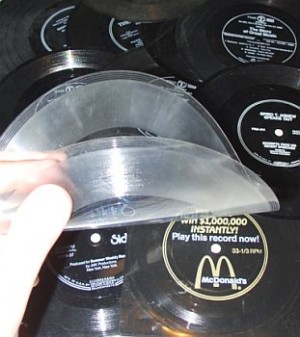
Visit this great site for a history of this odd phenomenon. Be sure to look at the Flexi Disc stamps from Bhutan!
Posted By: Paul - Sun May 24, 2009 -
Comments (2)
Category: Music, Technology, 1960s, 1970s, 1980s, 1990s
A Case of Spring Fever
The MST3K crew tackled this one years ago, but here's the raw original so you can insert your own funny talkback.
Posted By: Paul - Sat May 16, 2009 -
Comments (5)
Category: Dreams and Nightmares, Technology, 1940s
Weird Cars: Steam Powered Cars
At the beginning of the 20th Century, gasoline was difficult to store safely and therefore was considered a bad choice for a motor vehicle fuel. Steam engines were a highly refined technology and widely understood by the public. Steam powered cars ran on kerosene, which does not explode when burned. The one drawback was that you had to let your car build up a head of steam for up to half an hour before you could drive it. The car pictured below is a Stanley Steamer. Stanley made cars from 1896 to 1924.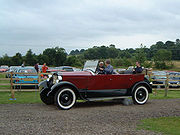
More in extended >>
Posted By: fyshstyxx - Wed May 13, 2009 -
Comments (2)
Category: Technology, Cars
They Had That Back Then? #2
Today's lesson: Musical Ring Tones.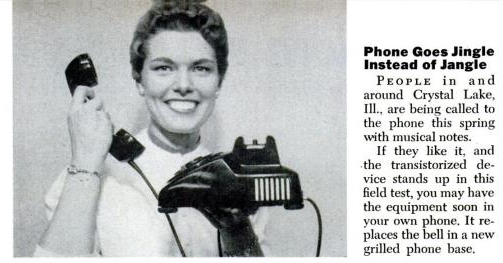
(from the May 1956 issue of Popular Science)
Posted By: Salamander Sam - Tue May 12, 2009 -
Comments (4)
Category: Inventions, Music, Technology, 1950s, Yesterday’s Tomorrows

| Who We Are |
|---|
| Alex Boese Alex is the creator and curator of the Museum of Hoaxes. He's also the author of various weird, non-fiction, science-themed books such as Elephants on Acid and Psychedelic Apes. Paul Di Filippo Paul has been paid to put weird ideas into fictional form for over thirty years, in his career as a noted science fiction writer. He has recently begun blogging on many curious topics with three fellow writers at The Inferior 4+1. Contact Us |

